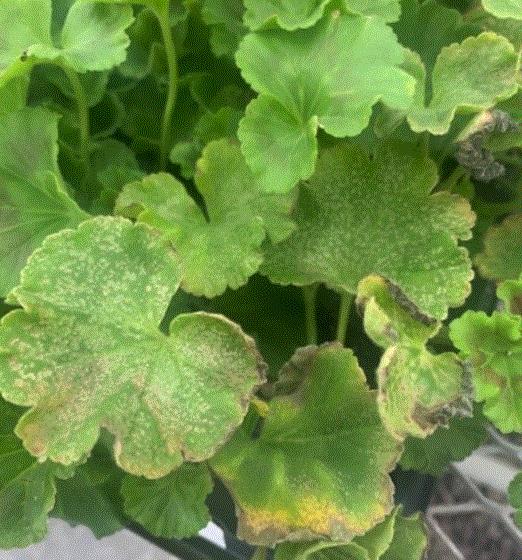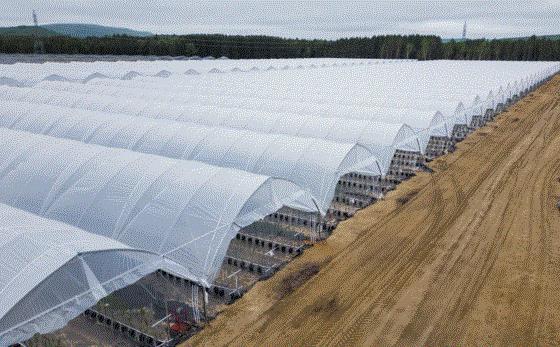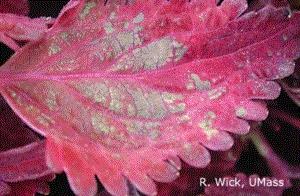NEW PODCAST: All About Princettia with Lorentina McKoy
For Tech On Demand EPISODE 179, Lorentina McKoy, the North American sales and product rep for Suntory Flowers, joined me to talk about Princettia—the unique euphorbia assortment from Suntory that looks different than traditional holiday poinsettias because it’s bred to be different. This opens up some unique uses and retail specs and also requires some production nuances.
Because breeding on Princettia is quite active, a whole new range of colors and patterns has come to market in the past couple of years, as well as a new sub-series with a more vigorous habit.
In this episode, Lorentina offers tips and trick to produce Princettias to their full potential, some ways she’s seen them marketed and sold around the world, why the fact that they’re a true “family” of genetics is important, and much more.

Although this episode is focused on one crop, we actually get into many different topics—from an early-Spring outlook and consumer trends to retail garden center tips and strategies to sell premium products. You’ll want to listen all the way to the end because this episode closes with some other TOP PICKS in the Suntory range of new varieties for 2026.
Here are some more Princettia resources we mentioned in the podcast:
Here are links to check out the conversation. Be sure to subscribe on your favorite podcast app so you never miss an episode. Be a friend and tell a friend—share this with anyone in your organization or around the industry who might benefit. And if you have a minute to leave a review, I’d sure appreciate it!
TECH ON DEMAND ON SPOTIFY
TECH ON DEMAND ON APPLE PODCASTS

Nick’s Tip of the Week: Toxic Geraniums
Each week, I’ll work with my buddy Nick Flax, a technical services expert at Ball, to share a concern that’s come up during one of his numerous calls with growers across North America. This week, he’s quickly recapping some previous tech tips about iron and manganese toxicity on spring crops like geraniums.
PROBLEM: It’s that time of year again—when weird symptoms start showing up on the lower leaves of your geraniums.

NICK’S TIP: Iron (Fe) and manganese (Mn) toxicity doesn’t only impact geraniums, it can also show up on crops like New Guinea impatiens, marigolds, pentas and others. But geraniums make up the bulk of the calls I get from growers each spring that result in consultations about toxicity issues. Here’s what to look for and some actions you can take to avoid or correct the problem.
What Fe/Mn toxicity looks like:
This disorder is caused by an accumulation of Fe and/or Mn in plant tissue.
-
Symptoms vary slightly across classes of geraniums (Pelargonium x hortorum, P. peltatum, P. domesticum and interspecific hybrids) and even among cultivars within a series, but they always appear on the oldest leaves first.
-
Symptoms often start as chlorosis (yellowing) along the leaf margin or chlorotic speckles from the centers out to the edges of leaves. Chlorosis advances across affected leaves over time
-
As symptom severity increases, the yellowed leaf margin and/or speckles in the middle of leaves will start to look burned (necrotic) and dark-colored splotches will appear in the affected areas.
-
If the disorder advances further, entire leaves will become necrotic and crispy. As lower leaves die off, symptoms will start to appear higher up in the canopy (on newer growth).
BMPs to avoid and correct Fe/Mn toxicity:
The best way to avoid this disorder in your geraniums is to regularly monitor the pH of your growing media.
-
A pour-thru (see my quick how-to video HERE) on a few pots or hanging baskets each week is a quick way to make sure soil pH is in an appropriate range for geraniums.
-
Target soil pH of 5.8 or higher for ivy and interspecific geraniums to keep out of trouble.
-
Target soil pH closer to 6.0 for zonal geraniums, as they are less tolerant of lower pH.
If you start to see early indicators of Fe/Mn toxicity, act quickly. Once damage is done, affected leaves will not recover. Corrective measures often take a few days to affect symptom progression, so the longer you wait, the worse the problem will get. To start, check soil pH ASAP and figure out how strongly you need to react:
-
If soil pH is about 5.6 to 5.7, symptoms are mild, and only one or two cultivars are showing symptoms, you can often correct soil pH with a simple switch to a nitrate-based fertilizer like a Cal-Mag (like 15-5-15).
-
If you already use a nitrate-based fertilizer but you inject acid to your irrigation water, reduce your acid injection concentration slightly.
-
If you don’t inject acid into your irrigation water and already use a nitrate-based fertilizer, apply a periodic drench of potassium bicarbonate to your geraniums. These types of products are water-soluble and easy to apply through an injector, but only aid in minor/temporary minor pH correction.
-
Unless you accidentally used a highly acidic fertilizer once or twice, it is likely that all or most of your media’s lime buffer is gone. Apply a flowable lime agent (such as CalOx pH) that contains multiple forms of lime (fast-acting and long-lasting) to correct soil pH and help keep it stable over a longer period. Continue to monitor soil pH and reapply as needed.

NEW VIDEO: Forcing Perennials—The New-School Way
Forcing perennials out of winter dormancy and into bloom for spring and summer sales isn’t a new concept for most growers, but growth in the perennial market has inspired a lot of folks to add perennials to their mix and there’s been plenty of research done to update protocols for breaking dormancy. Because of this, I wanted to jump on video and have a quick discussion with perennial plant guru Chris Fifo (from Darwin Perennials) to make sure everyone is on the same page when it comes to waking up perennials this spring.

Check out FORCING YOUR PERENNIALS TO WAKE UP—it’ll take less than 15 minutes!
In this concise tech tip-style conversation, we discuss the “traditional method” of forcing perennials and the “new-school way,” which results in better uniformity and reduced losses. Then Chris explained tactics any grower can use to force long-day perennials using an extension cord and a string of lightbulbs, as well as offering suggestions for reducing the risk of disease when perennials are being forced to wake up in early spring.
The bottom line? It’s not as difficult as it sounds—warming them up and basic night interruption will work wonders on your perennial crop this spring.
This quick discussion is also available as a Tech On Demand Podcast—episode 180. Here are the links you know and love …

Production Tips: Tomatoes
When I hit “upload” on this video in February, I knew it was early for most growers, especially up north, and I was prepared to share it again later in the spring. The time is now.
Every garden center—big and small—offers tomato plants for home gardens. Your key differentiators are varieties, container sizes and quality. Be the top wholesale supplier in your market by following Dr. Will Healy’s tomato production advice!

In BE THE LOCAL KING OR QUEEN OF TOMATO PRODUCTION, Will takes you through all the key factors necessary to finish high-quality tomato plants and send them to retail ready to sell. Tips for avoiding stretch and building root mass are covered in detail, as well as plenty more strategies Dr. Healy has helped growers like you put into practice over many decades.
FREE LIVE STREAM! Greenhouse Trends 2025
The controlled-environment (CEA) world is evolving rapidly, and 2025 is shaping up to be a pivotal year for greenhouse producers. Rising energy costs, climate change and the push for sustainable practices are driving innovation in greenhouse operations. Sound familiar? I think some of the same factors impact ornamentals production these days, as well.

Join host Chris Beytes as he welcomes Felix Chassouant, Vice President of Sales—Poly Greenhouses for Harnois Greenhouses, for an in-depth live stream where they explore key trends.
When? Thursday, May 1 at 1:00 PM Eastern (noon Central)
Where? Register HERE
Why? Here are some of the topics Chris and Felix will cover:
-
Smarter resource management with renewable energy, heat recovery and water-saving solutions
-
The rise of soilless growing systems
-
The transition from open-field farming to protected culture with high tunnels
Register for the live stream and get ready to earn why growers are exploring options in lower-tech high tunnels, optimizing costs, looking for ways to have more predictability and making greenhouses more autonomous.

Finish Line … Coleus Downy Mildew
Last week, I heard a few murmurs about Coleus Downy Mildew (CDM). It doesn’t seem like it’s been a widespread issue this season (at least not like it was a couple years ago …) but I thought it would be a good idea to close this week’s newsletter with a list of tips from University of Massachusetts Extension. And here’s a link to their FULL FACT SHEET ON CDM.

Cultural management involves excluding the pathogen from the greenhouse, proper sanitation, decreasing relative humidity (RH), increasing air circulation, and growing less-susceptible cultivars.
-
Toward evening, heat and vent the greenhouse, especially when warm days are followed by cool nights.
-
Improve horizontal air flow by the use of fans.
-
Run fans at night. Fans may be connected to sensors that will turn them on when the RH reaches 70% and turn them off when it drops below 65%.
-
Reduce humidity in the crop canopy and facilitate leaf drying by spacing plants properly.
-
Water in the morning, if practical, or use drip irrigation rather than overhead.
-
Scout regularly. Remove and discard infected leaves and plants.
-
Do not save stock plants from year to year.
-
Do not use coleus in outdoor flower beds near greenhouses.
Talk to you next week …




Please feel free to send your comments, constructive criticism and topic ideas to me at bcalkins@ballhort.com.

Bill Calkins
Editor - Tech On Demand
This email was received by you and 25,618 other fine subscribers!
If you're interested in advertising in Tech On Demand, contact Kim Brown ASAP and she'll hook you up.